
BYD Seal Review

Introduction
BYD is quite possibly the biggest brand you've never heard of.
The Chinese firm has been around for almost 30 years and started out making batteries, quickly becoming a key supplier for the likes of Motorola and Nokia. From there, it's gone on to become one of the world's biggest battery suppliers for everything from mobile devices to vehicles.
There's a chance your iPad is powered by BYD tech. And your Tesla.
But BYD also builds its own cars. In fact, it's one of the world’s biggest makers of “new energy” vehicles (hybrid and electric), making everything from forklifts and trains to buses and family cars. And it's got its sights set on Europe.
In early 2023, we saw the Atto 3 take a swing at the Kia Niro and MG ZS, and more recently, the Dolphin arrived as a relatively compact alternative to the Nissan Leaf, VW ID.3 and Renault Zoe. Now, the Seal has arrived, looking to challenge in the seriously competitive executive saloon segment where the BMW i4, Polestar 2, Hyundai Ioniq 6 and Tesla Model 3 live.
Select's rating score* - 3.9 / 5
At a Glance
As befits its aquatic name, there’s something fluid about the Seal’s design. Its long, gently curved bonnet sweeps up and flows smoothly into the windscreen and roof. The rear is similarly styled with smooth, simple curves and a slight uptick in the boot lid, beneath which runs a full-width light strip that wraps into the oval tail lights for a distinctive light signature. At the front, slimline boomerang-shaped LED strips in the bumper and C-shaped LED headlights create a similarly unusual effect. Elsewhere, a less-is-more approach results in a pleasantly clean, simple design reminiscent of key rivals without shamelessly aping them.
Inside, there’s space for four in a neat, comfortable interior, while a traditional saloon boot offers plenty of storage but with slightly awkward access.
The Seal comes with two drivetrain options, which also represent the only two trim levels. There's a 313hp rear-wheel-drive version, badged Design, and an all-wheel-drive Excellence model with 530hp. Both use an 82.5kWh battery for between 323 and 354 miles of range.
Key Features
BYD is a battery specialist and is massively proud of the “Blade” battery system it uses in its cars. This creates blocks of battery cells in long, thin “blades” mounted side-by-side in an effect that looks a little like the inside of a beehive. BYD says this approach allows it to squeeze more capacity into a smaller space than other systems while offering unrivalled strength and safety.
In the Seal’s case, for the first time, BYD is employing cell-to-body construction, which means the battery forms part of the vehicle’s floor, lending massive torsional rigidity and impact absorption for improved dynamics and safety. Using the battery as a structural element in this way also saves weight by removing the need for any mounting frame between the battery and the chassis.
BYD also likes to point out that its LFP battery chemistry means it doesn’t need cobalt, a rare earth metal whose extraction is a controversial topic in EV production. And it says the chemistry makes the batteries more durable — better able to stand up to repeated charging and discharging than other types of EV battery.
Alongside the battery, BYD produces every other element of the Seal’s powertrain, from the motors to the on-board charger. It says the 8-in-1 powertrain system offers unrivalled integration and delivers 89% system efficiency.
One thing to note is that the Seal has a maximum charging rate of 150kW while all its key rivals offer rates over 200kW and, in the case of Kia and Hyundai, 350kW.
Performance & Drive
We drove both versions of the Seal, including a brief spell of track driving to experience the two-motor car's performance.
The more basic Design version has its single 313hp motor at the rear and offers plenty of straight-line pace. The run from zero to 62mph takes just 5.9 seconds, and the Seal will go on to 112mph.
The four-wheel drive model, however, is significantly faster. So fast that BYD felt the need to put its 0-62mph time on the tailgate. Just beneath the Seal logo, there’s a small badge that reads 3.8s. As in 3.8 seconds to 62mph. In a well-appointed four-door saloon.
High-spec versions of most of its rivals offer similar pace, but it still feels faintly ridiculous to have supercar acceleration in an otherwise pretty unassuming car.
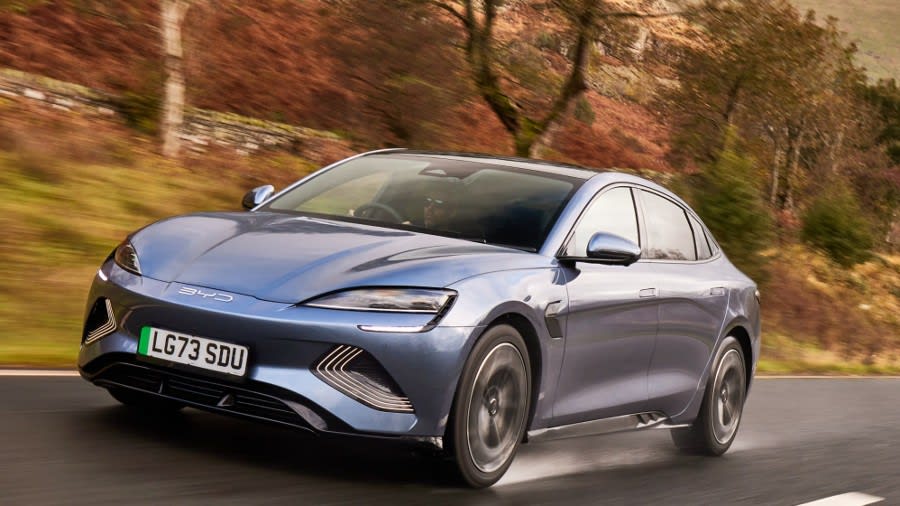
We drove both cars on some very wet Lake District roads littered with damp leaves and puddles. Despite the nasty conditions, the Excellence, in particular, felt composed and sure-footed, marshalling its plentiful power and torque well. Both versions coped well with the demanding twisting routes thanks to precise and well-weighted steering, but, like so many of its kind, there’s not a lot of feedback. It’s akin to the direct but lifeless drive of a Polestar 2 or Tesla Model 3 rather than the engaging driving experience of a BMW i4.
Both versions coped admirably with the Lakes’ poorly maintained roads and absorbed large potholes well, but the Excellence’s frequency-sensitive semi-active dampers had an underlying jitteriness that the lighter and passively sprung Design managed to avoid.
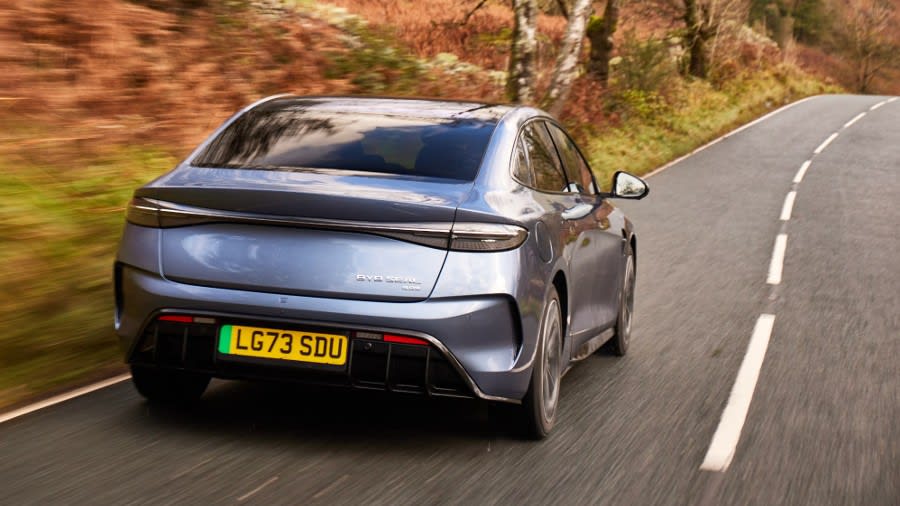
Running Costs
The Seal’s list price of between £45,695 and £48,695 is on par with premium rivals. This isn't a brand interested in coming in cheap to try and generate quick sales growth.
Monthly, leasing a Design spec car will cost around £514* for a private customer on a 48-month agreement, at the time of writing, while the Excellence is another £40 per month.
Like all electric cars, BiK is pegged at 2% until 2025, which means a basic rate taxpayer using one as a company car will face a tax bill of under £200 a year.
Range is up to 354 miles, but more importantly, official efficiency is more than 4 miles/kWh. However, it must be noted that we saw just 3m/kWh on our cold and damp test drive, which translates to a range of around 250 miles.
BYD offers a six-year or 93,750-mile (that’s 150,000km) general warranty on the Seal, while the battery is guaranteed to maintain at least 70% state of charge for eight years or 125,000 miles.
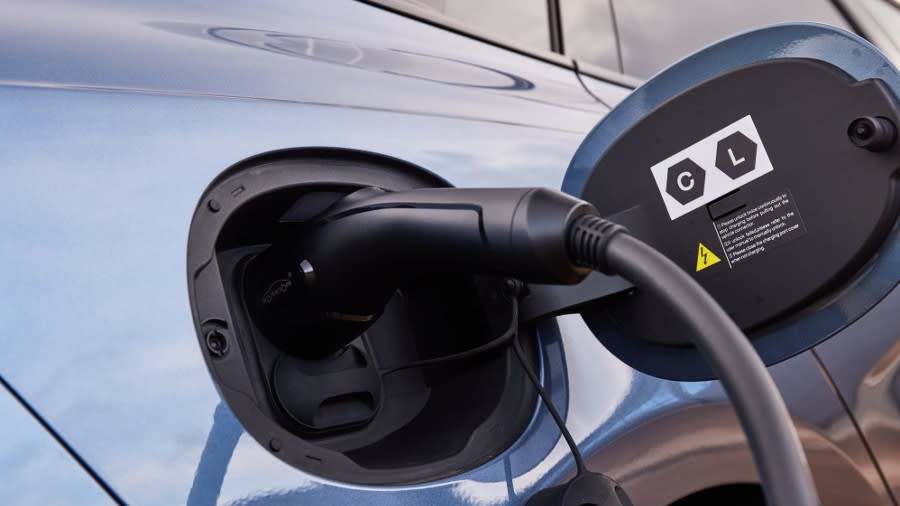
Interior
Both the BYD Atto 3 and, to a lesser extent, Dolphin have wild interior designs with weird styling that's entirely at odds with their humdrum exteriors. Despite its more adventurous exterior styling, the Seal is a far calmer and more mature affair inside, as befits its more high-end aspirations.
Like the Atto 3, the view ahead is dominated by a 15.65-inch touchscreen that swivels between portrait and landscape orientation and houses an Android Auto/Apple CarPlay-compatible operating system and most vehicle controls. The screen is big and sharp, and the OS is quick enough to respond, but too many simple functions — ADAS and brake regeneration, for example — are buried in menus that require multiple stabs at the screen to access.
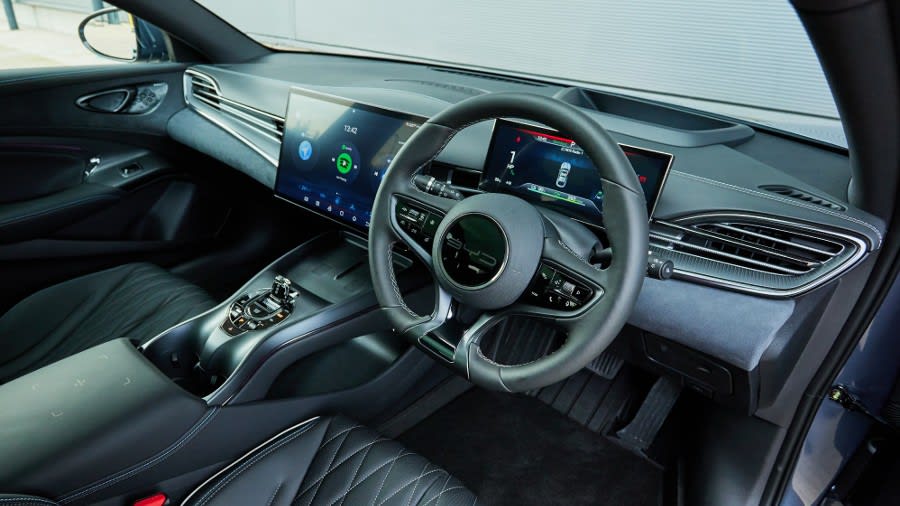
Ahead of the driver, there’s a 10.25-inch digital instrument display that is lightyears ahead of the basic unit in the Atto 3.
Elsewhere, BYD has taken a less-is-more approach, with a simple wing-like dashboard that sweeps out from behind the central screen and a lower centre console that pinches in around a crystal-effect drive selector.
Overall, the quality of the materials and construction lives up to the Seal’s premium ambition. There’s a mixture of leather and faux suede on most of the surfaces, and the switchgear has a pleasingly solid feel. It might not be quite as high-end as a Hyundai Ioniq 6 or BMW i4, but it looks and feels better put together than a Tesla Model 3.
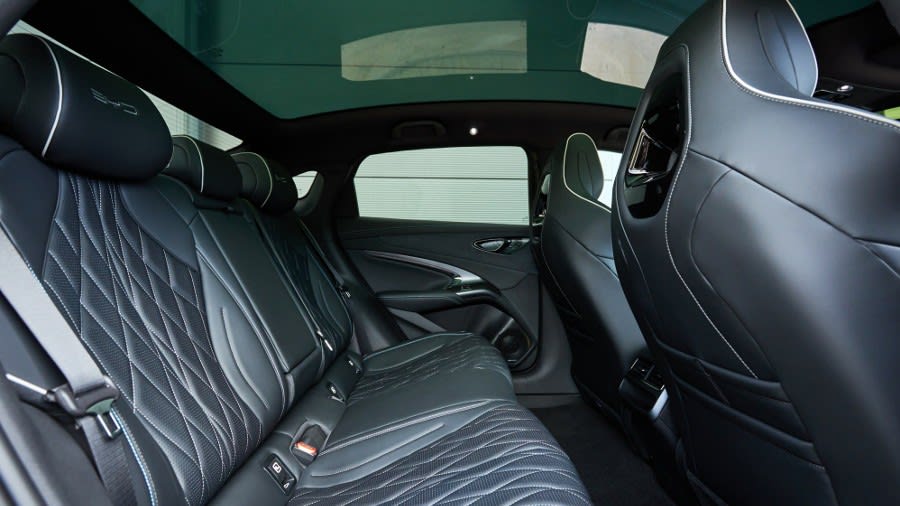
While the design and quality are good, what really stands out about the Seal’s interior is the phenomenal amount of space, which is like something from a class above. Even with the driver’s seat set for a 6’ 5” tester, there was still legroom for a similar-sized passenger behind, although headroom was a bit of an issue. Get four more regular-sized people on board, and they’ll have more room than they know what to do with.
The Seal’s boot is a decent 400 litres, but, like the Tesla Model 3 and Hyundai Ioniq 6, its usability is hampered by the low, narrow saloon tailgate. The Seal also has a 53-litre “frunk” ideal for storing charging cables and other necessities.
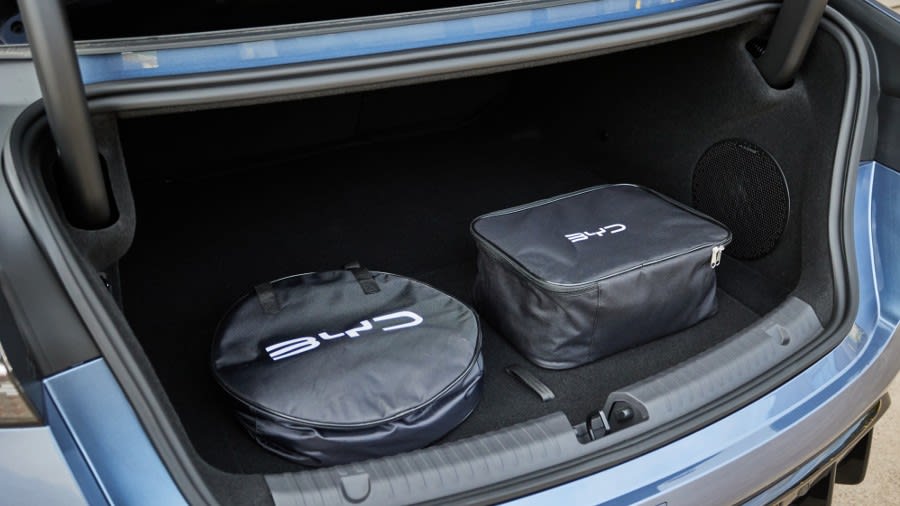
Safety
The BYD Seal has received a five-star rating from Euro NCAP, scoring 89% on adult occupant protection and 87% for child occupant protection.
It features seven airbags as standard, including side curtain and front centre protection, and comes with a comprehensive suite of active safety systems. These include forward collision warning with autonomous emergency braking, rear collision warning, rear cross-traffic alert and braking, blind spot warning and lane keep and change assist.
Like so many systems in Chinese-built cars, this latter system panics whenever you get even faintly close to a white line and has to be deactivated via three screen presses every single time you start the vehicle.
BYD also makes a huge deal about the levels of safety testing carried out on its Blade Battery to ensure that it can deal with crushing and piercing impacts without compromising the cells’ integrity or safety.
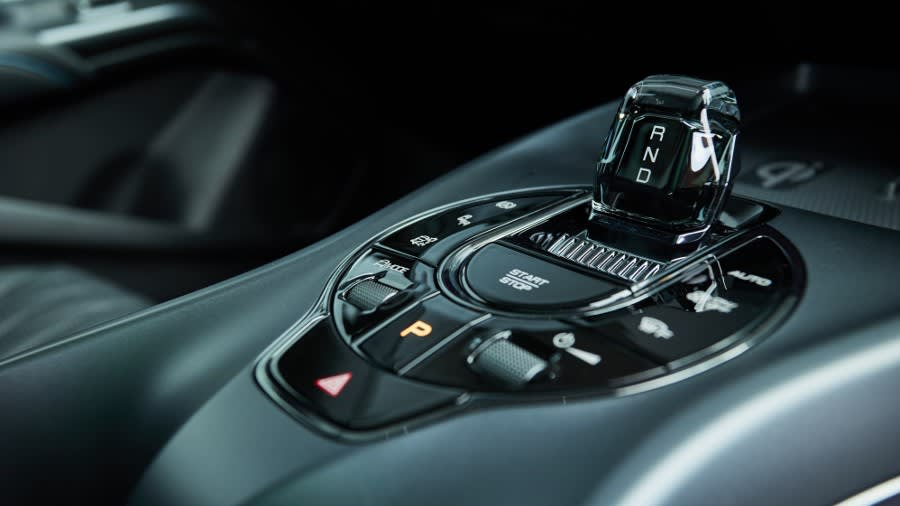
Options
BYD isn't big on options. In fact, customers’ only choices are which of the six colours they'd like their car painted, whether they want a black or blue interior and whether they want more range or more power.
The 2wd Design spec comes with 19-inch alloys, a powered tailgate, leather upholstery, adaptive cruise control, front and rear parking sensors and 360-degree camera, dual-zone climate control, a panoramic sunroof, keyless entry and start, adaptive LED headlights. It also gets the full suite of driver assistance and safety kit mentioned above.
As well as an extra motor, the Excellence spec adds variable frequency dampers, a head-up display and intelligent torque vectoring to the Design’s kit list.
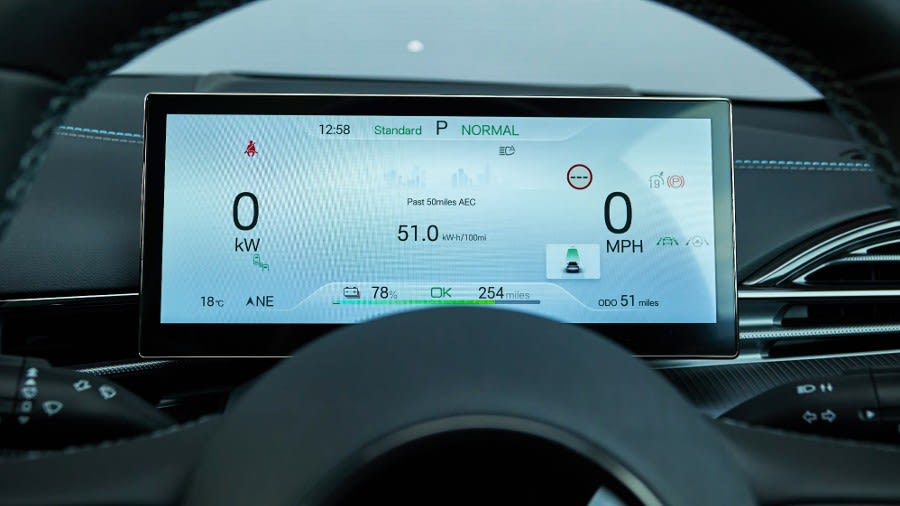
Rival Cars
Whichever version of the Seal you're considering, its rivals have something to match.
There’s the Polestar 2 with its attractive high-end interior design, smart Android Automotive interface and 400-mile range. Plus up to 476hp with the Performance pack.
The Kia EV6, which starts at £45,245 and is more of a crossover than a straight saloon, offers better practicality, faster charging and a seven-year warranty. But the all-wheel-drive version has just 325hp, and the 585hp GT costs a hefty £62,645.
Hyundai’s Ioniq 6 (below) shares some of the slippery design of the Seal but with Hyundai's ultramodern twist. It's slightly more expensive but comes with a better range (338 miles) and Hyundai’s five-year warranty.

And, of course, there’s the Tesla Model 3 with its love-it-or-hate-it spartan interior and cheap access to the Supercharger network, which can help cut running costs if you regularly cover long distances.
Verdict
BYD wants the Seal to be taken seriously among some very serious competition, and, on first encounter, it appears to be worthy of consideration alongside the likes of Hyundai, Polestar and Tesla.
The sleek exterior and calm interior design are the best-resolved yet from BYD, and the interior quality feels like a match for its rivals, while it offers truly impressive levels of passenger space.
The electric powertrain in even the entry-level car is impressive in its performance and range, and we’d go as far as to say the extra power of the Excellence trim is unnecessary, especially given the sacrifice in driving range.
Only a few touchscreen-related annoyances, some damping problems in the Excellence and that impractical saloon boot count against the Seal in this ultra-competitive class.
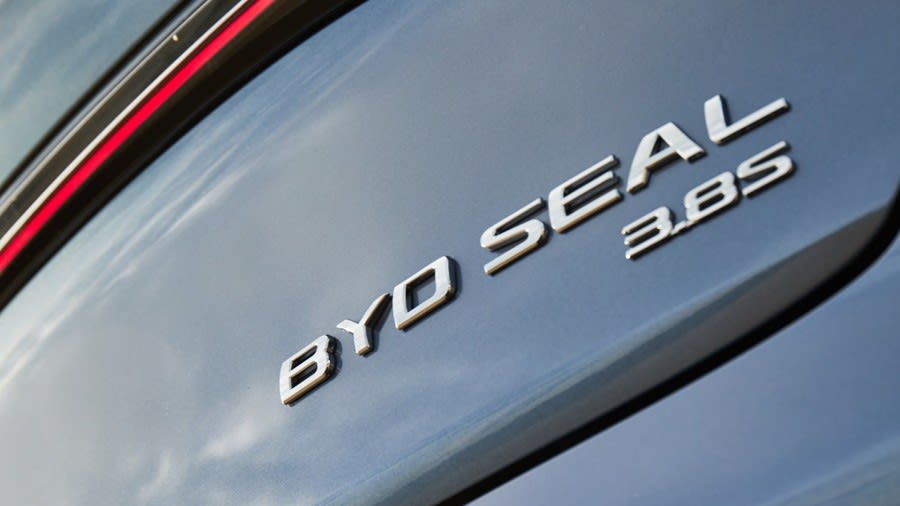
Where to next?
View latest BYD Seal lease deals- from just £510 per month ex VAT**.
Call us on 0118 3048 688 or hit the green 'Enquire' button for more details.
Looking for a great leasing deal? Check out our incredible range of Special Offers and Lease Deals.
New saloon? Read our latest Reviews and find the right model for you.
Want to know more about leasing? Take a look at our comprehensive Leasing Guides.
Interested in everything motoring? Why not catch up on all the latest Car Leasing News.
**Score based on Select’s unique meta score analysis, taking into account the UK’s top leading independent car website reviews of the BYD Seal.
**Correct as of 08/04/2024. Based on 12 months initial payment, 5,000 miles annually, over a 48 month lease. Initial payment equivalent to 9 monthly payments, or £4,588.38 (Plus admin fee) Ts and Cs apply. Credit is subject to status.




















